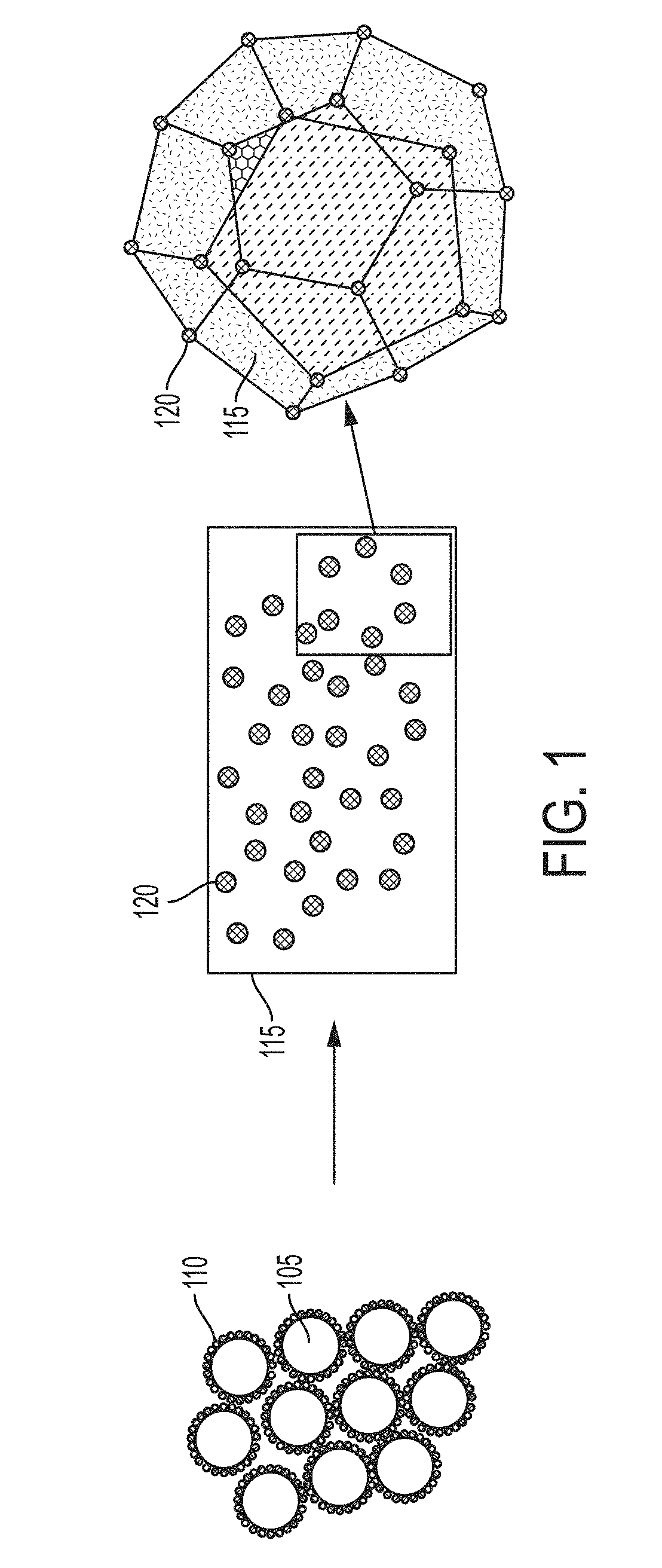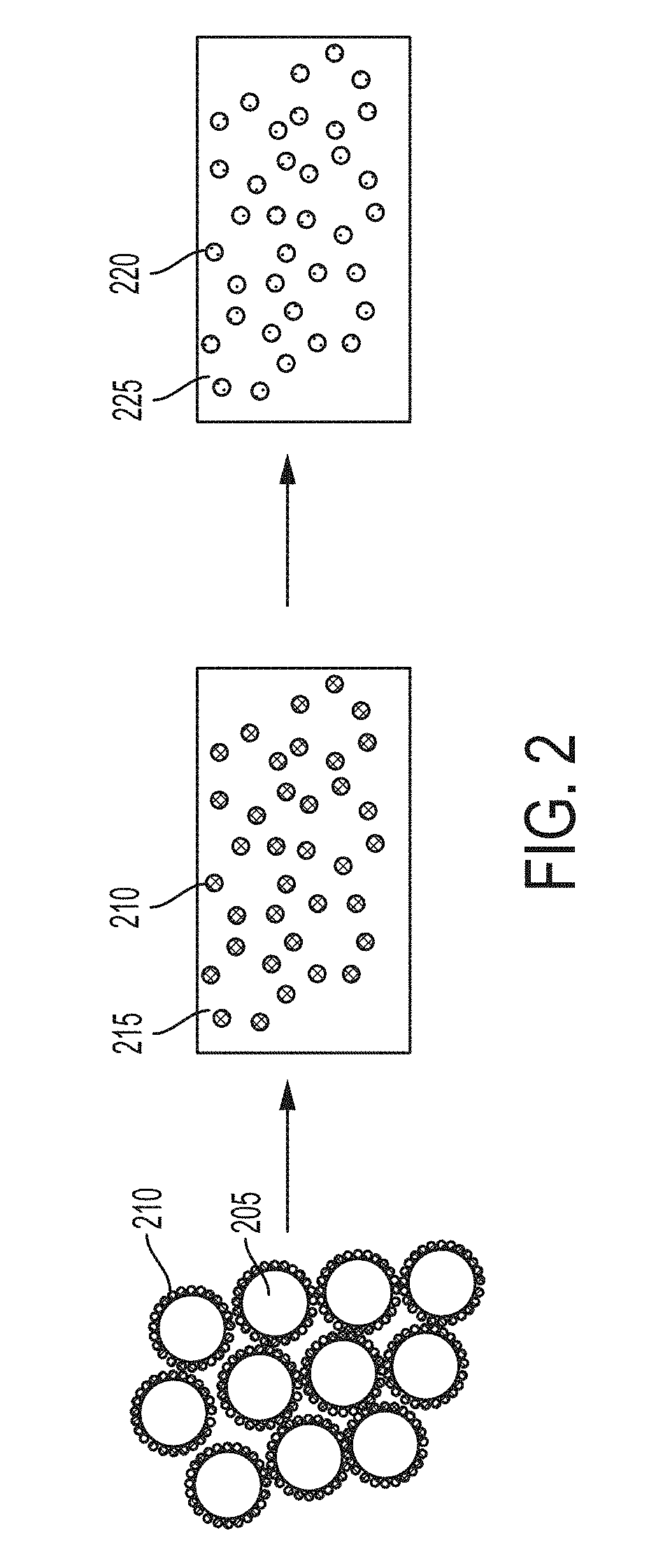Materials and methods for producing metal nanocomposites, and metal nanocomposites obtained therefrom
a technology of metal nanocomposites and metal nanocomposites, which is applied in the field of metal nanocomposites, can solve the problems of high capital investment of equipment for material processing, difficult to make metal nanocomposites, and high processing costs
- Summary
- Abstract
- Description
- Claims
- Application Information
AI Technical Summary
Benefits of technology
Problems solved by technology
Method used
Image
Examples
example 1
n of AlSi10Mg—WC Functionally Graded Metal Matrix Nanocomposite
[0305]In this example, a functionally graded metal matrix nanocomposite is produced, with AlSi10Mg alloy and tungsten carbide (WC) nanoparticles. The starting AlSi10Mg alloy has an approximate composition of 10 wt % silicon (Si), 0.2-0.45 wt % magnesium (Mg), and the remainder aluminum (Al) except for impurities (e.g., Fe and Mn). The density of tungsten carbide 15.6 g / cm3 and the density of AlSi10Mg is 2.7 g / cm3. The tungsten carbide nanoparticles have a typical particle size of 15 nm to 250 nm.
[0306]Tungsten carbide nanoparticles are assembled on an AlSi10Mg alloy powder. This material is consolidated under 300 MPa compaction force and then melted in an induction heater at 700° C. for one hour. The resulting material (FIG. 10) exhibits a functional gradient according to the distribution of WC nanoparticles. FIG. 10 is an SEM image of a cross-section (side view) of the resulting AlSi10Mg—WC functionally graded metal mat...
example 2
n of AlSi10Mg—WC Master Alloy Metal Matrix Nanocomposite
[0308]In this example, a master alloy metal matrix nanocomposite is produced, with AlSi10Mg alloy and tungsten carbide (WC) nanoparticles.
[0309]A functionally graded metal matrix nanocomposite is first produced according to Example 1. The material shown in FIG. 10 is the precursor to the master alloy. According to FIG. 10, the tungsten carbide nanoparticles are preferentially located (functionally graded) toward the bottom of the structure. This is also analogous to the schematic of FIG. 6. The AlSi10Mg alloy (metal matrix phase) toward the top contains little or no tungsten carbide nanoparticles. The desired material for this master alloy is the lower phase, containing a higher volume of tungsten carbide nanoparticles distributed within the AlSi10Mg phase.
[0310]The AlSi10Mg alloy (metal matrix phase) labeled “AlSi” is then separated from the lower phase labeled “AlSi+WC”. The resulting material is a master alloy metal matrix n...
PUM
| Property | Measurement | Unit |
|---|---|---|
| Size | aaaaa | aaaaa |
| Size | aaaaa | aaaaa |
| Size | aaaaa | aaaaa |
Abstract
Description
Claims
Application Information
 Login to View More
Login to View More - R&D
- Intellectual Property
- Life Sciences
- Materials
- Tech Scout
- Unparalleled Data Quality
- Higher Quality Content
- 60% Fewer Hallucinations
Browse by: Latest US Patents, China's latest patents, Technical Efficacy Thesaurus, Application Domain, Technology Topic, Popular Technical Reports.
© 2025 PatSnap. All rights reserved.Legal|Privacy policy|Modern Slavery Act Transparency Statement|Sitemap|About US| Contact US: help@patsnap.com



